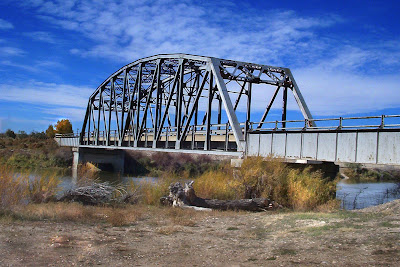I receive a lot of mail regarding images I have posted on my
JPG Magazine and
Flickr accounts. The two most frequently asked questions I get are what kind of camera do I shoot with and what software do I use. I thought I would answer those questions in this post.
I own a Nikon D70 with an assortment of Nikkor lenses and use a SB-600 flash as a slave. I don't put a lot of faith in brand names like I use to and I'm more of a believer in the photographer's "eye" than the camera's make or model. My first 40 plus images uploaded on Flickr were all taken with a Kodak EasyShare CX4200 2MP camera.
As far as post-processing is concerned, I use Photoshop 7 on the majority of my images. I also use Paint Shop Pro for pixel pushing any images I plan on selling or printing in large format... just a personal preference.
I also have the program GIMP but have not used it much lately. I can accomplish much of the same results using GIMP as I do in Photoshop but prefer the latter. I enjoy experimenting with different editing software, but we are creatures of habit and find my working "comfort zone" in Photoshop.
For example, here is a shot I took in Nevada. I show the before and after images using a few common tools and methods in the post production process with Photoshop.

Driving in Nevada with a speed limit of 70 mph in an 18-wheeler can present some photographic challenges. The above scene was shot without any filters, and camera movement is obvious in the above foreground. Incidentally, camera settings included 1/320 sec. exposure, an aperture of f/9 at a focal length of 100mm. I will mention here as well I almost always shoot landscapes with a white balance in "shade" mode with a fine tune of -3.

As you see there is big difference between these two images. The post-processed one includes the following procedures:
- Light Levels were adjusted for correction in the darker areas.
- A duplicate layer was created to include a hard overlay and a high pass filter was applied followed by a merge of the background layer.
- After saving the changes, a copy was made to a separate directory.
- Another totally different image was opened of a sunset sky I had in my archives and was added to the active shot by using the move tool. Proper alignment of this procedure in my opinion is crucial.
- A layer mask was added.
- The gradient tool was used next and this is more of an art than a science. Play with this for awhile until you feel comfortable and you will discover many amazing results.
- Using the clone tool I added the little truck in the far left corner and added another mountain to the background for aesthetics and balance.
- Next I added a small degree of saturation to the full frame.
- And finally before saving the file to a jpg format, I applied the gaussian blur to the sky scene using the magic wand isolating this area to reduce unwanted noise.
This may seem like a lot of work if you are new to post production work, but once you become familiar with a few tools it becomes much easier and faster. The order of sequence is not too important, as the above is only my example. Master a few tools and you will develop your own style and techniques.
A special "Thanks" to
Anna Theodora for her recent tip on the use of the
gaussian blur tool! And I might add, truly one of my favorite photographers!
To the "purist" who feel post editing is somehow "cheating" in the world of photography--dodging, burning, super imposed exposures and cropping have been performed in the old school darkroom for ages, I leave with this quote
in the words of photographer Duane Michals.
"Photography deals exquisitely with appearances, but nothing is what it appears to be."Have fun and if you have any questions about the above images contact me at slimeface2009[at]yahoo.com and I will try to answer them.









